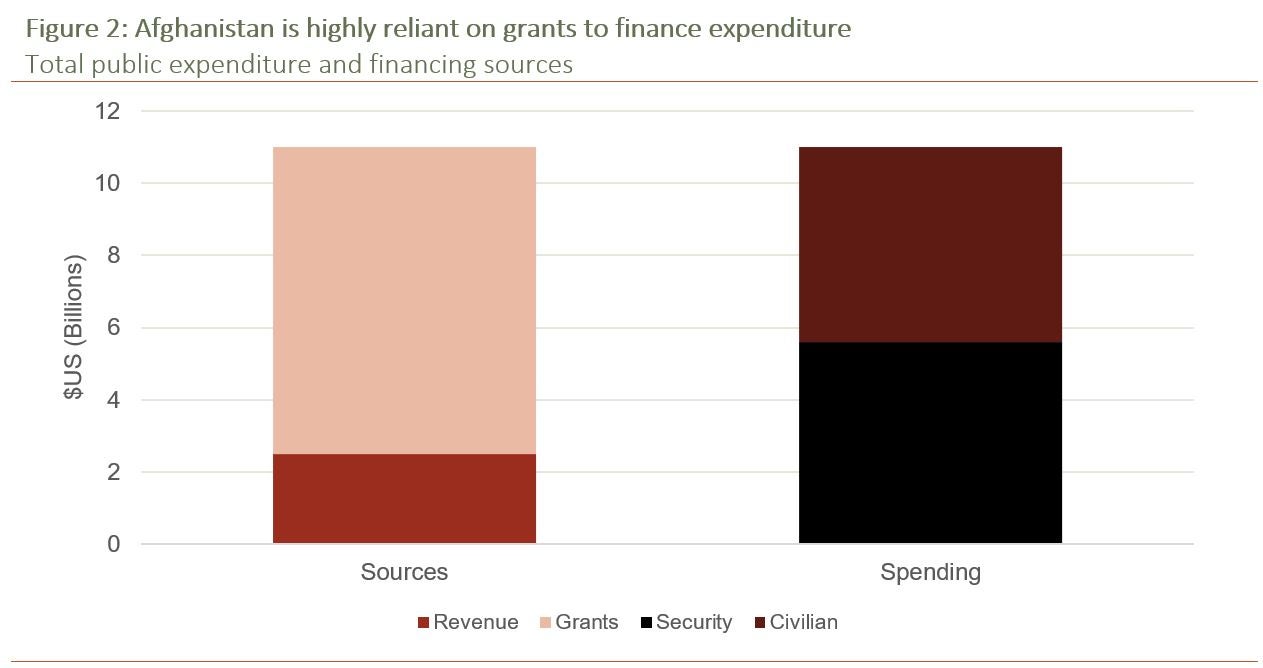 Photo: World Bank
Photo: World Bank
Public spending in Afghanistan is equal to more than half of the economy’s output. Government and international partners spend around $11 billion, in an economy that produces around $19 billion of output per year .
With such high levels of public spending, it’s worth understanding where all that money is going. We try to provide some answers in our new Public Expenditure Update.
The short answer is that this is hard to determine. With around $5.7 billion of public expenditure delivered through ‘off-budget’ programs (directly managed by international partners without going through government systems), it is difficult to compile a single comprehensive picture of public spending.
Without a comprehensive picture of where funds are going, it’s very difficult to understand whether resources are being well-used and whether government funds are going to the right places. For this reason, Government is already working with international partners to improve data on off-budget spending to build up the kind of complete picture needed for informed resource allocation decisions .

Even with current data limitations, though, some things are very clear.
Firstly, public spending patterns reflect Afghanistan’s status as a country in conflict. Roughly half of total spending is on the security sector, with security spending equal to around 30 percent of economic output, compared to just three percent for most low-income countries.
Total on-budget expenditures are equal to around $135 per person per year. Of this amount, $50 is absorbed by the security sector.
In fact, high security spending largely explains Afghanistan’s overall high levels of public spending. If security expenditures are excluded, total public spending in Afghanistan appears very close to levels that would be expected of a country at its level of income.
Secondly, current spending levels are only possible because of international support. Grants pay for fully 75 percent of public expenditure in Afghanistan, and more than 50 percent of the Government budget.
This presents major sustainability challenges, given the expectation that grants will begin to decline over time.
Of total spending of $11 billion, only around $2.5 billion is financed by Government revenues.
While there may be scope to increase revenues to replace grants, this is a long-term process and only viable with much faster rates of economic growth. In the meantime, any rapid reduction in grant support would inevitably lead to reduced expenditure on social services and infrastructure, posing risks to recent development gains.

Finally, despite high spending relative to the size of the economy and large grant inflows, absolute per capita spending on key services is very low. Total on-budget spending is only around $17 per capita for education and only $8 per capita for health (although substantial resources for healthcare are also provided off-budget). With such limited resources available for vital public services, and grants expected to decline in future, efficiency and effectiveness in spending are more important than ever.The World Bank and other partners are already working with Government to strengthen public finance systems, improve our understanding of off-budget spending allocations, and ensure alignment between spending and policy priorities.
Our expenditure update shows just how important such efforts will be as resource constraints become tighter and Afghanistan moves towards self-reliance.
Related:


Join the Conversation